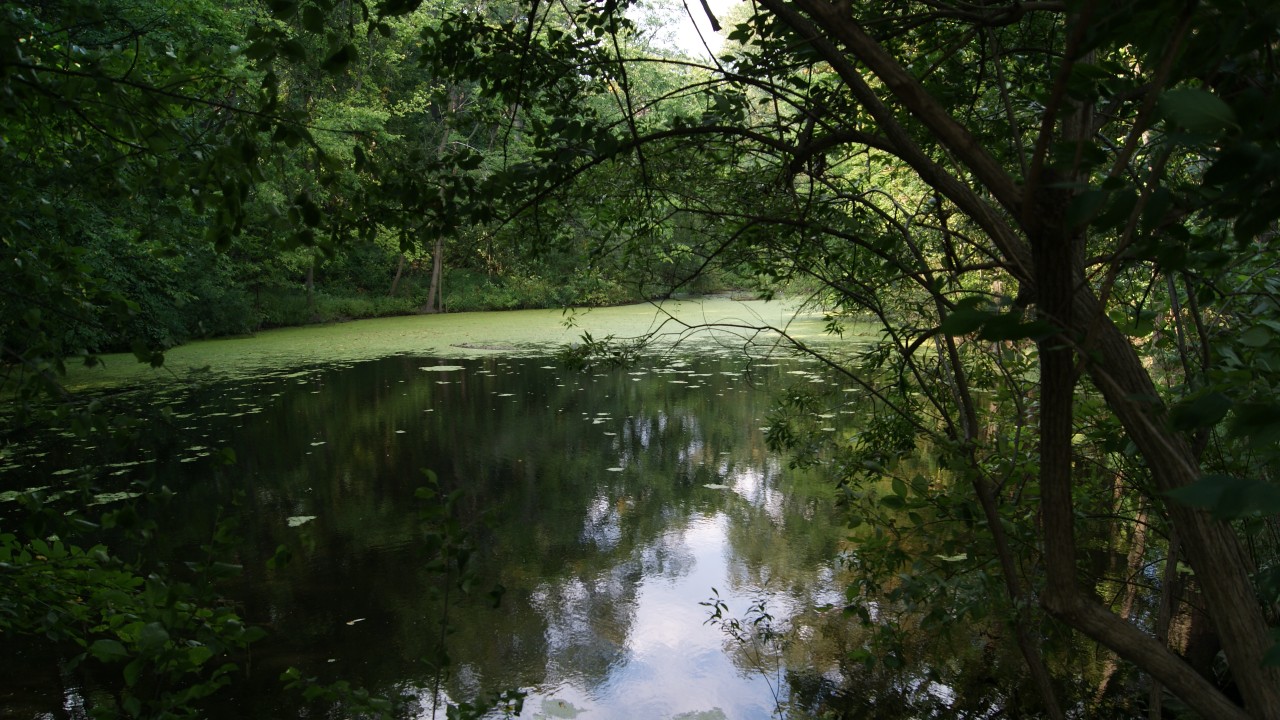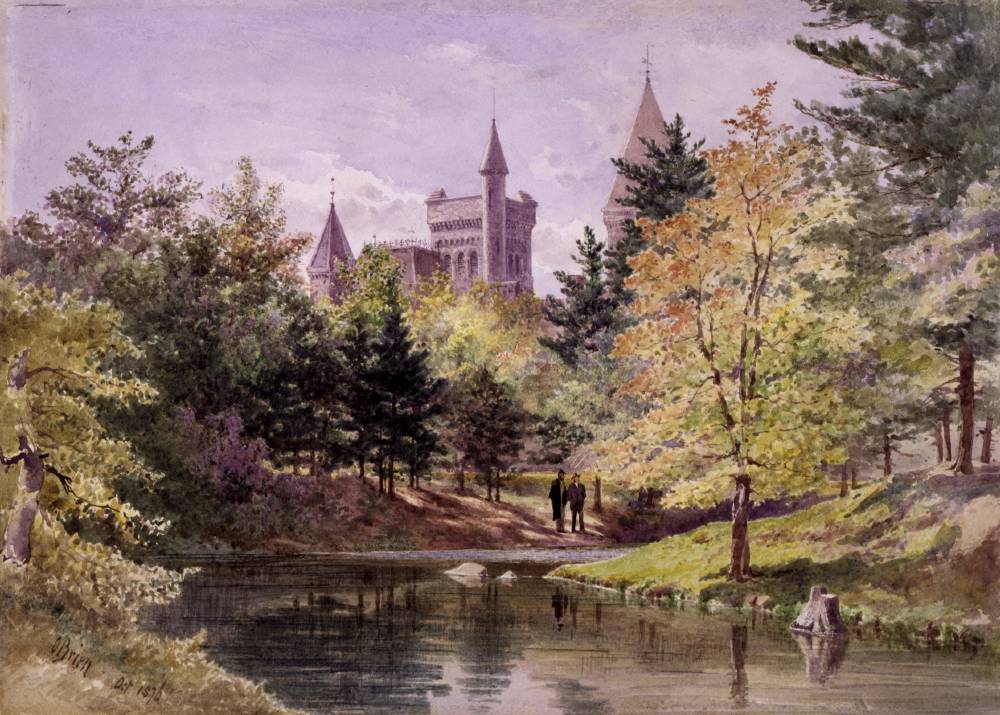Rediscover Taddle Creek, one of Toronto’s forgotten waterways
Buried for over a century, you can still spot the creek in the city’s landscape.

Before Toronto’s downtown core was a network of pavement and concrete, it was crisscrossed with numerous small streams. They helped fuel the city’s early industry, but were gradually lost over the course of the nineteenth century.
The most famous of these forgotten waterways is Taddle Creek. Today, the creek is buried underground, but you can still spot its path if you know where to look.
1
The headwaters: Taddle Creek Pond
Most of the Greater Toronto Area’s waterways first emerged around 13000 BCE. The massive Laurentide Ice Sheet, which rose over 2 km above the city, left behind many underground flows of water when it melted at the end of the last Ice Age. Where these flows surfaced, they became rivers and streams, including Taddle Creek.
The creek likely started in Wychwood, just north of Toronto’s modern-day Davenport neighbourhood. According to an essay by archaeologist James V. Wright in Aboriginal Ontario: Historical Perspectives on the First Nations, Indigenous people first came into contact with the creek when they moved into this area around 9000 BCE. Agriculture came to the region in roughly 1000 BCE, and Taddle Creek’s floodplains were used for growing corn when the crop was introduced about 500 CE.
Although Taddle Creek is now mostly buried underground, its original course is still marked by the Wychwood ravines. Wychwood Park also has a pool called Taddle Creek Pond, which was created in the late 1800s when the creek was dammed. This is one of the last locations where its waters still surface.
2
Taddle Creek Park

The creek — which follows a south-easterly course downriver from Wychwood — was well-known to the citizens of bygone, industrial Toronto. In the eighteenth century, it was one of several waterways that provided raw building materials to the growing populace. The city’s first brickyard was even built on its banks in 1796.
Today, there is a small greenspace near St. George subway station called Taddle Creek Park, built where Canadian Nobel laureate and co-discoverer of insulin Frederick Banting once lived. Since 2011, the park has contained a sculpted pitcher called The Vessel, made by artist Ilan Sandler from 4 km of steel rods — the same length as the creek itself.
Taddle Creek can still be detected near the park. If you stand outside the Bedford exit of St. George station on a rainy day, you can hear the surface runoff flowing south as it burbles up through the sewer grates.
3
Philosopher’s Walk

When it flowed freely, Taddle Creek continued to meander south-east until it emptied into Lake Ontario. But one of its longest lasting and most famous stretches was the portion that passed through the University of Toronto.
In 1859, a portion of the creek was dammed to create McCaul’s Pond, which became a popular campus spot for swimming, fishing, and skating. It’s also a common motif in paintings from the time, with students often shown relaxing and gathering by the water’s edge.

But poor sewage practices over time began to contaminate the river, driving complaints of foul smells from across the city. Eventually a decision was made to bury it, and the reclaimed land was used for residential and commercial properties. Where possible, the creek was directed to underground sewage systems.
By 1886, Taddle Creek was gone from campus. The university eventually built the Hart House student centre on top of the old pond, and converted the dry creek bed into Philosopher’s Walk. This scenic path runs from Bloor St. to Hoskin Ave., a ravine that still draws students and tourists during the lush summer months, the last ghost of Toronto’s buried Taddle Creek.
Want to learn more?
The organization Lost Rivers has created guided tours of many of Toronto’s forgotten waterways, including Taddle Creek. Check out their website for more info.
This is an updated version of an article originally published in 2022. It has been updated with a revized creek visualization.
Code and markup by Bridget Walsh and Kyle Duncan. ©Torontoverse, 2023